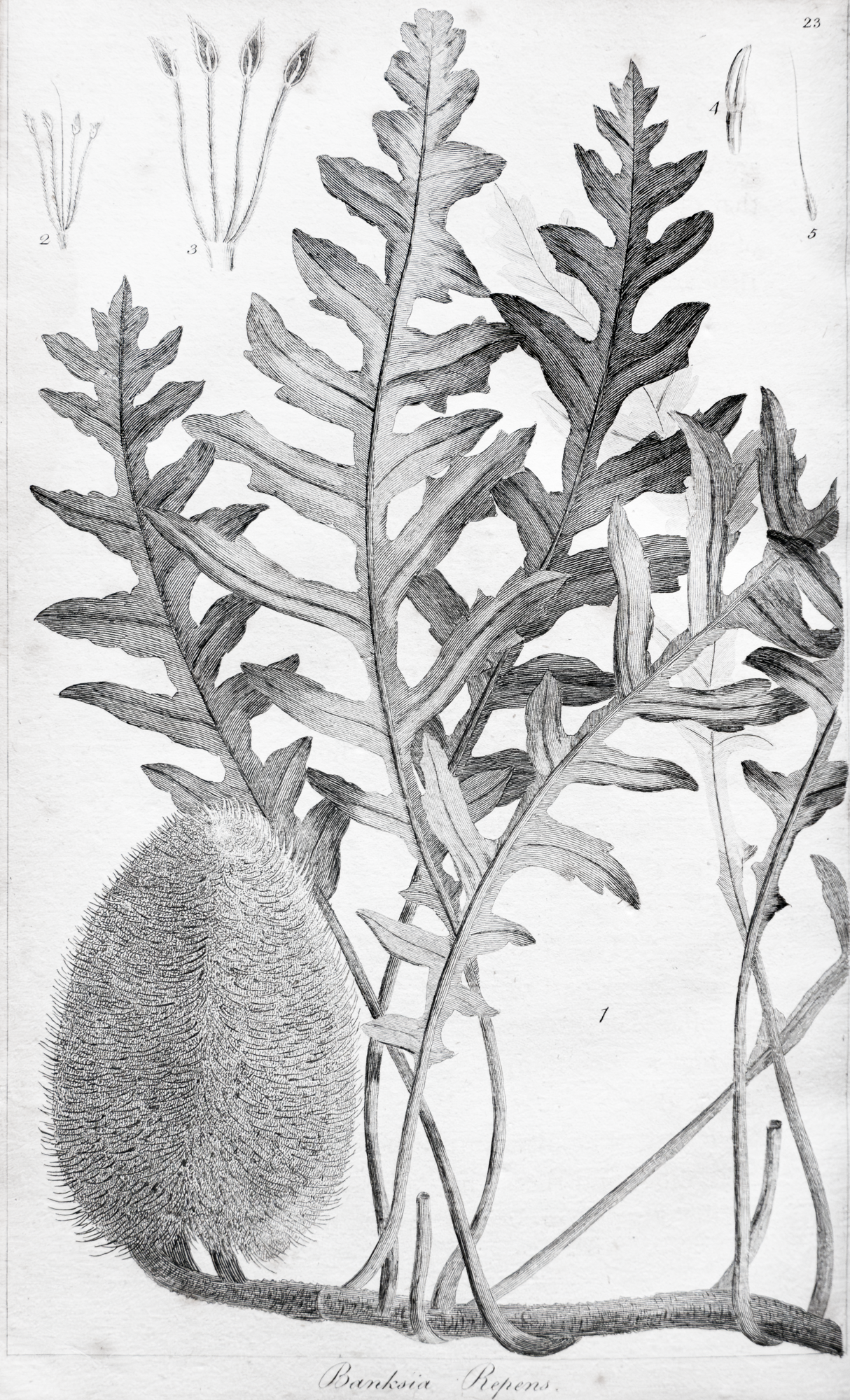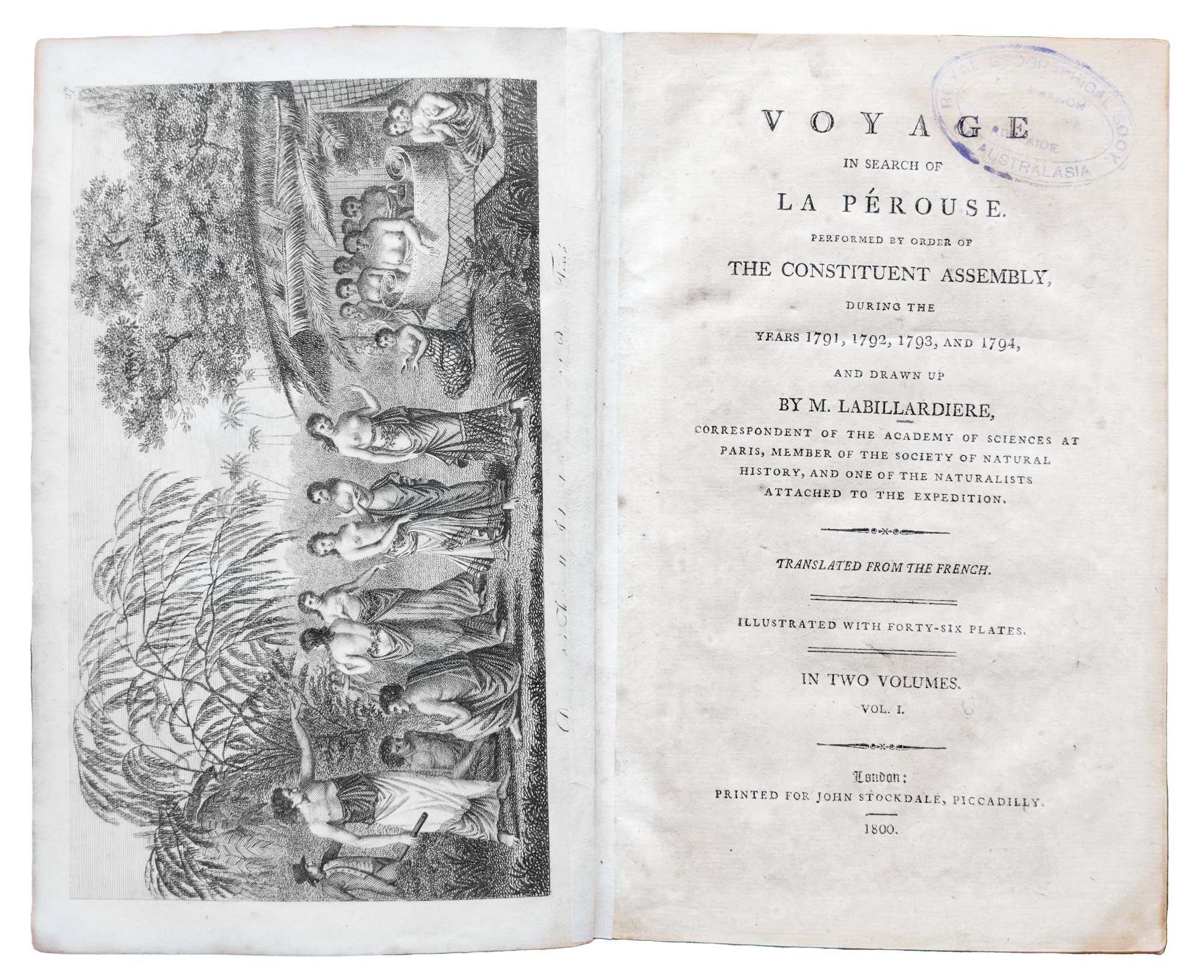The rescue expedition was commanded by Bruny d'Entrecasteaux with the ships Recherche and Esperance and was well equipt for scientific research. Jacques-Julien Houtou de Labillardiere was on board as well as several other naturalists including Claude-Antoine Gaspard Riche and the gardener Felix Delahaye. The official draughtsman/artist was named Piron and he provided the illustrations for The Voyage. There were also two astronomers on board Abbe Claude Bertrand and Dom Ambroise Pierson and two hydrographers Charles Francois Beautemps-Beupre and Miroir-Jouvency.
On 28 September 1791 the expedition set sail from Brest. Sailing via Tenerife they reached Table Bay on 17 January 1792 where Labillardiere made his first botanical collections. Departing the Cape of Good Hope on 16 February they sailed across the southern Indian Ocean to Van Diemen's Land where they anchored on the south east coast in Pig Sties Bay - the north arm of Recherche Bay. Here they stayed from 21 April to 28 May 1792 and collected 5,000 botanical specimens including some 100 new species. On departing they sailed north up the D'Entrcasteaux Channel along the west coast of Bruny Island exploring and recording as they went - completing one of the major hydrographic discoveries of the voyage.
They then sailed northeast to New Caledonia and then north west to the Solomon Islands, New Britain, New Ireland and west along the north coast of New Guinea to Ambon. Unfortunately they missed Vanikoro (Pitt Island), at the eastern end of the Solomons, where it is now known La Perouse had been wrecked and that there were survivors.
At the end of 1792 the two ships sailed south-west from Ambon towards Timor and then south down the coast of Western Australia. Rounding Cape Leeuwin they sailed past King George Sound and along the coast of the Great Australian Bight to Cape Adieu. Critically short of water they then sailed to Van Diemen’s Land where they knew water was available. On the 21 January 1793 they anchored at Rocky Bay on the south side of Recherche Bay but moved to Adventure Bay. On this second visit to Van Diemen's Land Labillardiere was able to do more significant collecting of botanical specimens and also made contact with the local aborigines.
The expedition next sailed east to the Friendly Isles (Tonga) via the northern tip of New Zealand arriving 22 March 1793. Here they were able to establish that La Perouse had not stopped there although Cook and Bligh clearly had.
Leaving on 9 April 1793 they then sailed for New Caledonia arriving in mid April. Here Labillardiere made a major botanical collection which was the basis of the first published study of the island's flora. On 10 May 1793 the expedition left New Caledonia and sailed for the Solomon Islands but once again, although sighting Vanikoro where La Perouse had been wrecked, did not land there and so missed finding traces of that expedition.
They then sailed west and did important survey work on the east coast of New Guinea and the north coast of New Britain - these charts were to remain current for over a century.
The commander d'Entrecasteaux's final entry in his log was dated 8 July 1793 and he died on 19 July.
He was greatly respected by members of the expedition and mourned on his death as one of the great navigators of the French Navy. His place was taken by D'Auribeau who had health problems himself at the time but managed to continue with his duties.
By this time the crew were becoming exhausted and many had contracted scurvy so they made for the Dutch East Indies to try to recover their health and to get water and supplies. On 19th October they anchored at Surabaya only to find that they, the French, were not only at war with the Dutch but also England, Prussia, Austria and Spain. In addition, France itself was in turmoil having recently been declared a republic. After many difficulties in dealing with the Dutch the two ships had to be sold to cover the costs that had been incurred.
Labillardiere was imprisoned by the Dutch but eventually was able to get to Ile de France where he arrived 7 May 1795. He spent six months "botanising" there and eventually arrived back in France on 12 March 1796.
So ended a very successful scientific expedition but which did not achieve its goal of finding La Perouse. It was probably too long and so exhausted the crew and their resources and led to the ignominious sale of the ships.
However the legacy to science left by Jacques-Julien Houtou de Labillardiere was invaluable.
Labillardiere's book lists the Principal Officers on board the Recherche including (transcribed here)
Bruny Dentrcafteaux, Commander of the Expedition, Doribeau Lieutenant, Renard surgeon, Letrand Aftronomer, Labillardiere Naturalift, Beautems Beaupre Geographical Engineer, Piron Draughtfman.

